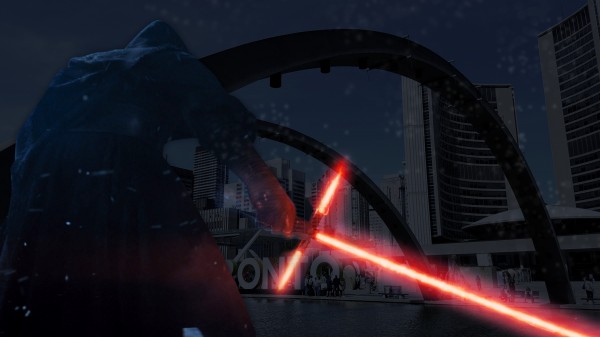Notwithstanding his conversion this week on the toll road to Damascus, Mayor John Tory’s looming financial problems were abundantly visible to anyone who spent more than a few minutes tallying up his platform promises last year and then the price tag on the policy files he’s supported since taking office.
He has insisted, against the advice of every sentient planner this side of Winnipeg, on pressing ahead with the Scarborough subway, which is going to cost way more than the budgeted $3.5 billion as sure as the sun will rise tomorrow. (By way of merely one piece of evidence, look at the overruns on the Spadina extension.)
Tory also has to find $2.7 billion, but likely more, for Smart Track. He’s got to conjure up $400 million for the Gardiner and $1.73 billion to fix Toronto Community Housing’s crumbling apartments. Tory’s big bang economic development scheme – the Canary Wharf-ization of the Lever Brothers site on Eastern Ave. – requires hundreds of millions for a flood control berm at the mouth of the Don. And he’s got a shiny new anti-poverty strategy that is, um, begging for cash.
And on. And on. And on. As Tory admitted in his state of the city speech last week, Toronto has $17.9 billion in un-funded projects on the books.
So, one cheer for Tory for finally backing a modest new “levy” — a move that arrives excruciatingly late in the day, and won’t come anywhere close to bridging the aforementioned fiscal chasm (the proposed levy will raise $70 million annually for transit and housing; after 60 years or so, that tax will have raised enough to cover the city’s share of Smart Track and the TCHC renos).
Two-and-a-half cheers to the new city manager Peter Wallace for reading Tory et al the riot act, and pledging to come forward with a suite of new revenue tool options. And three for David Miller, who, way back when, had the jam to stare down the realtors’ hysteria and push through the land transfer tax — the revenue from which has saved the city’s bacon, year after year.
Indeed, wouldn’t it be nice to hear the mayor, and his coterie of pop-up tax fighters, give Miller a shout out on that score when council convenes this week to genuflect about the 2016 budget and mull over the Tory Tax™? (Don’t wait up.)
While the timing of the pronouncements from Wallace and then Tory have much to do with the budget cycle and the positioning for the coming scramble for federal infrastructure dollars, it’s difficult to overlook the reality, however grim, that Tory now has far more political space to advocate such measures because the ailing Rob Ford is sufficiently out of commission that he hasn’t done much else besides issue a statement denouncing the mayor’s reversal.
I don’t know what Wallace plans to put in his tool kit, but there are several obvious candidates, including the vehicle registration tax, additional right-of-way levies on private utilities, and taxes on alcohol, cigarettes and parking (all have been considered and dismissed). Then there are others not presently permitted by the province, such as a local sales tax, highway tolls and an occupancy tax on visitors.
The dearth of the latter is a classic example of how Queen’s Park has caved for years to lobbying, in this case by a globalized hotel/convention industry that knows perfectly well its members/customers foot those kinds of surcharges in virtually every major city, especially those, like Toronto, on the convention circuit (e.g., San Francisco, 14%; Austin, 9%; Amsterdam, 5%; Chicago, 16.4%, etc., etc.)
According to this briefing note presented last year during the budget process, the harmonized sales tax rate on hotel rooms in Ontario is actually lower than for others goods and services. This one seems like a gimme, but Tory will have to take a little stroll up to the Pink Palace and actively persuade finance minister Charles Sousa to pass regulations allowing such a tax.
Finally, I’m guessing we’re heading towards a conversation about asset sales that goes beyond the usual rinse cycle of developable city-owned land. Reliable sources have told me that there’s an active discussion in the Ontario electricity industry about a potential privatization or partial privatization of Toronto Hydro, mirroring, perhaps, the gradual sell off of 60% of Ontario Hydro.
Should that idea be on the table? Considering that the province’s motivation in divesting control of Hydro One is to raise capital for transit, the policy rational should apply here, too.
Kathleen Wynne’s Liberals stuck to their guns and began the Hydro One sale last month in the face of significant opposition. I’d say it’s worth at least debating here, too: after all, the capital for those costly city-building/city-defining projects – I’m thinking here of the $1 billion flood protection berm at the mouth of the Don or the $500 million Queen’s Quay LRT – has to come from somewhere. A portion may be covered by federal infrastructure dollars, but definitely not 100%.
Mostly, what I hope we’ll see in the next few months is an intelligent debate, as opposed to the fear-mongering and tantrums we’ve witnessed whenever this subject has come up in the past. Tory’s got a huge role to play in setting the tone of that debate: he can pander to council’s chest-thumpers and the perennially outraged groups like Canadian Federation of Independent Business, or he can act like a grown up mayor and face the fact that what he and council want to build will cost money the city does not currently have.
The mayor signalled last week that he wants to take the high road, but time will tell. Indeed, if Tory and council retreat back to the inanities of yester-year, I hope Wallace will have the nerve to recommend that they vote to cancel or ice some of these big ticket projects. After all, if the city doesn’t have a realistic plan to pay for all this stuff, it simply makes no sense to continue to plan.






4 comments
Substantially raise the price of TTC, downtown parking and road tolls and then give a rebate back to Toronto ratepayers. In essence tax the hell out of 905er’s that freeload off Toronto.
If Hydro is privatized or attempted to be, the wail will go up about the loss of the dividends to the City. The real wailing should be that these dividends are not already being reinvested in an electricity infrastructure that was shown by the ice storm not to be sufficiently resilient, at a time when every new condo and transit line adds more and more stress to the system.
As a part-privatised entity Council will lose accountability for Hydro priorities beyond the OEB’s veto over rate increases (look at Mississauga where the 10% tail of private ownership definitely wagged the dog of 90% Council ownership).
If it was proposed that we privatise Toronto Water there would be an explosion of civic discontent (not withstanding the years of 8-10% increases). We should value Hydro no less, and find revenues elsewhere.
It’s embarrassing that the city is in the business of being it’s own largest slumlord, and then doesn’t have the cojones to do what any landlord would do if their assets were collapsing into unusability: raise rents to create the needed capital to finance improvements.
Toronto housing should not be a for-life solution for the able-bodied. It should be assistance for a streak of bad luck. Rents should begin in the basement and then go up 5% per year to encourage people to make more of their opportunities, and free up the space for the next round of impoverished people who need subsidized opportunities.
Other Ontario cities and towns, not to mention other provinces, can house poor people too. hose unable to hack it in Toronto, should be given incentive to consider their options, and plan forward.
There’s this nearly 20-year-old stat from Vancouver that every car there got about $2700 worthy of avoided cost/subsidy. A Vehicle Registration Tax of $100 would only be a start on that sum.
One of the more salient areas of subsidy is storm drain services. Who knows just how much area of the City is covered in asphalt, and while it’s useful, sure, maybe it’s time for a driveway surface area tax, and disconnect driveways, not the downpipes from older buildings with weaker foundations. As a real example of how much money might be in play, I came across a stat about 70% of the Don River’s storm surge being storm drains, and we’re committed to how much in Don mouth reworks for “floodproofing”??